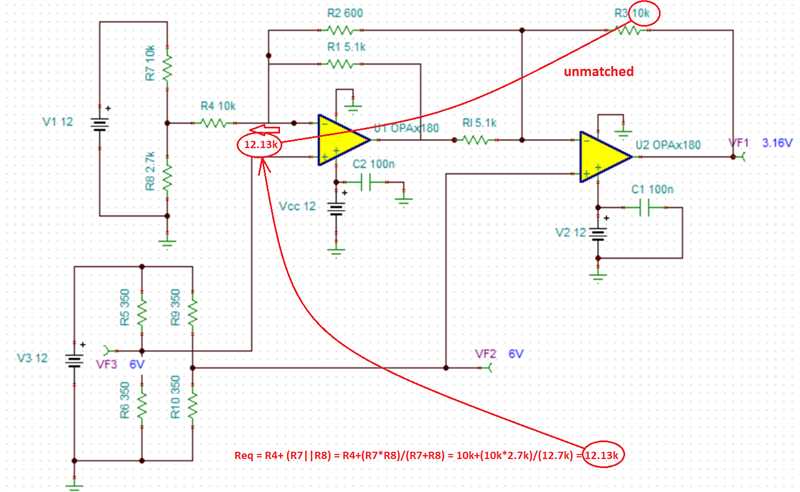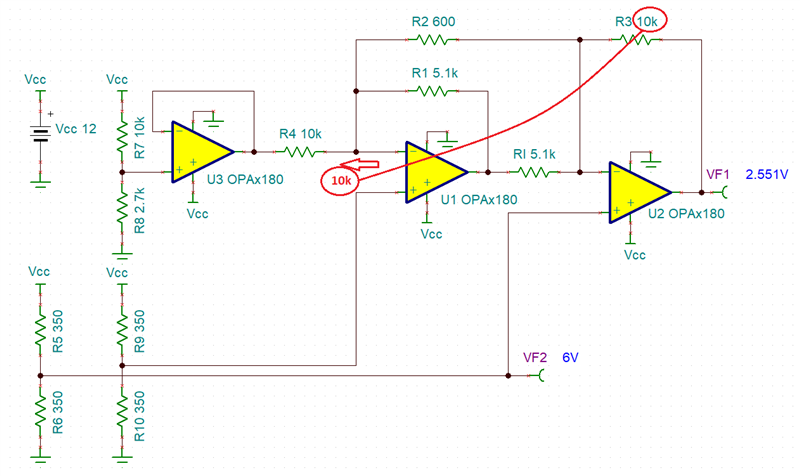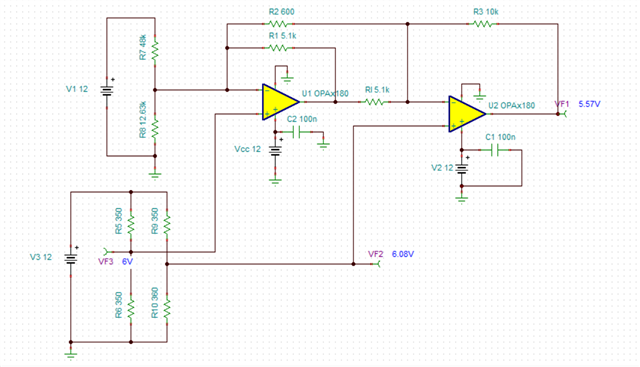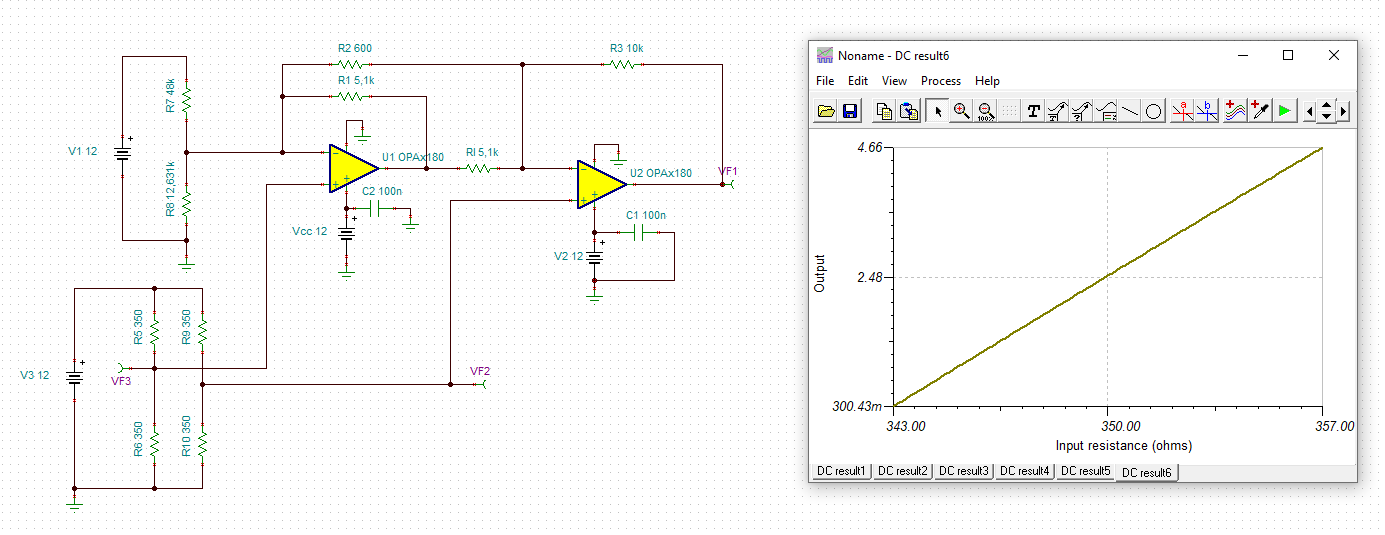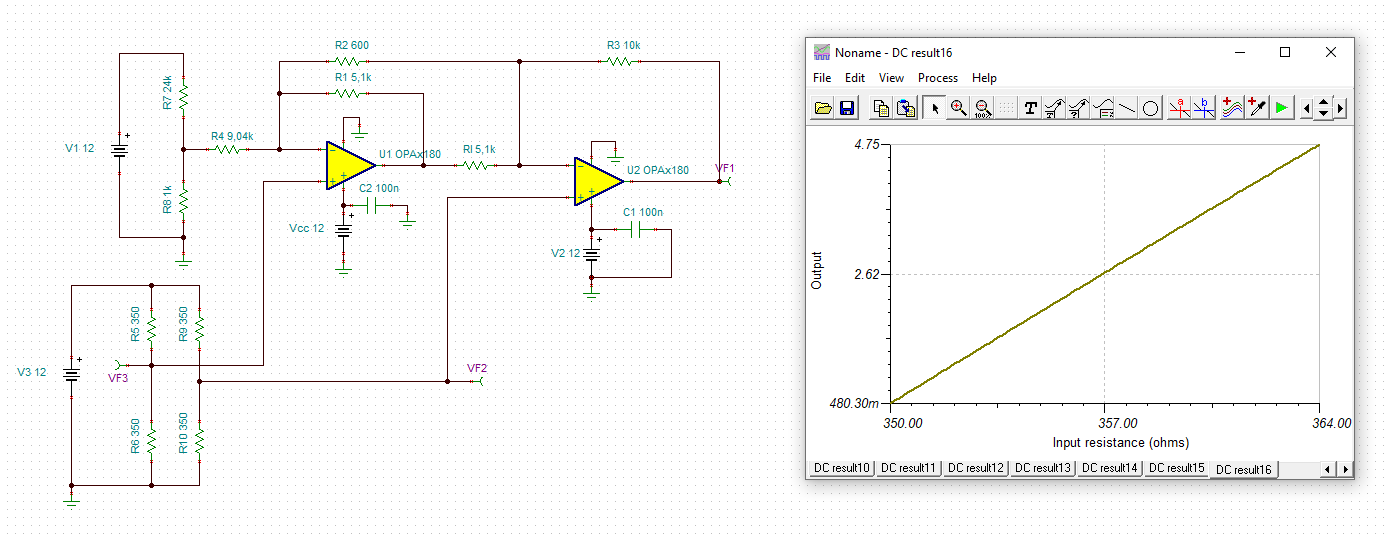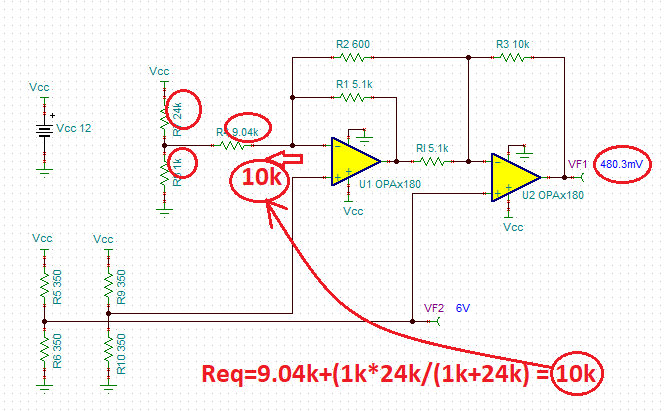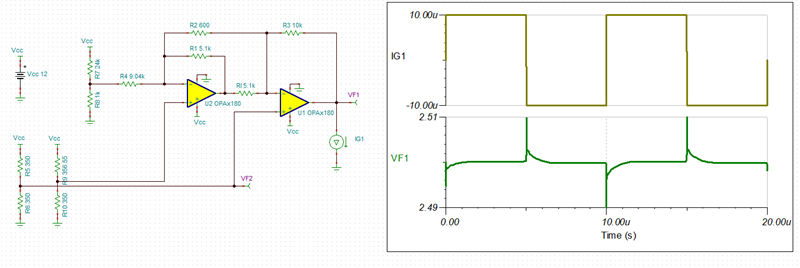Other Parts Discussed in Thread: OPA180, OPA196, OPA197, OPA191, OPA192, TINA-TI
Hi,
Good day!!
As part of one of our design We are using the OPAMP "OPA2180IDR" as Single supply Strain Gauge Bridge Amplifier Circuit. The Output of this Opamp is Connected to the ADC "ADS1220IRVAT" .
The Simulation file is attached Below.
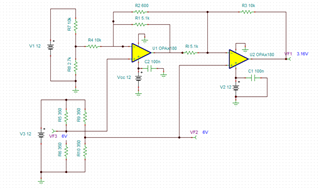
In the application note
We have replaced the resistors as mentioned below,
R11:600 Ohm, R4: 10K, R2: 10K
In our case,
The excitation voltage of the strain gauge is 12V.
The reference volatge is set from a voltage divider using resistors 10K and 2.7K and the reference voltage (2.551V) is taken accross the 2.7K resistor.
The bridge resiatance is 350 Ohms and the output of the strain gauge is 2mV/V.
Below is the response of the ADC when force is applied.

The output voltage of the circuit seems not linear with the applied force.
A sudden voltage dip occurs while measuring the voltage as shown in the graph. May i know the reason for that?
Kindly let me know whether this circuit is stable/ Not. What changes i need to do inorder to avoid this Voltage dip and to maintain linearity with the Applied Force?


